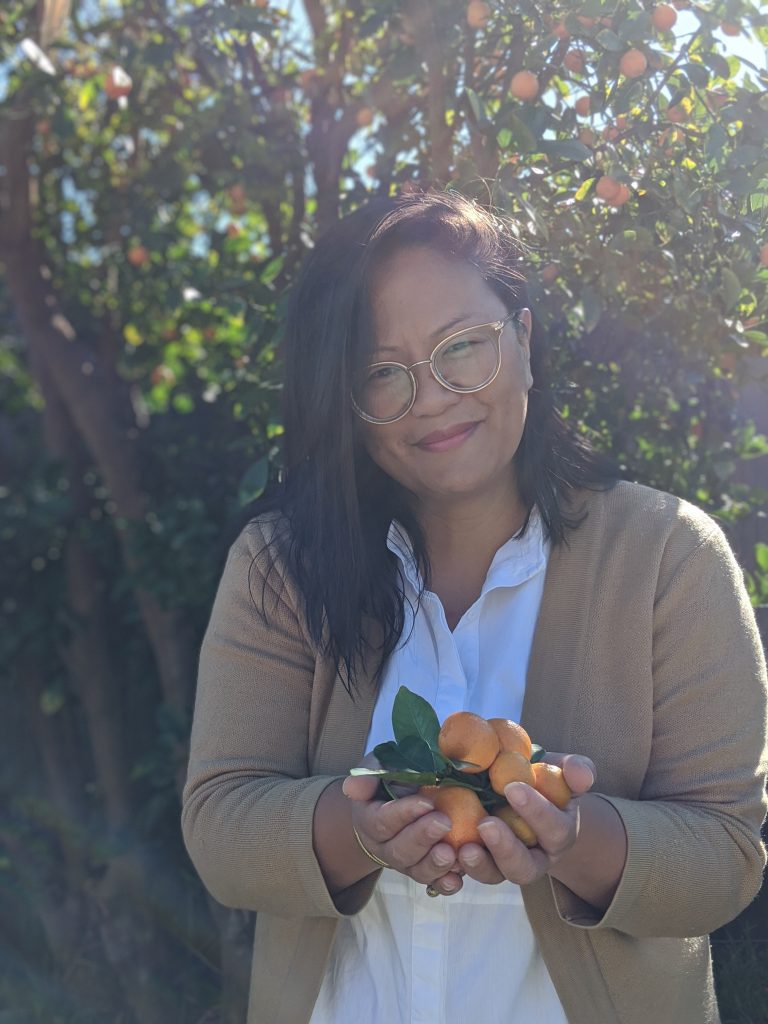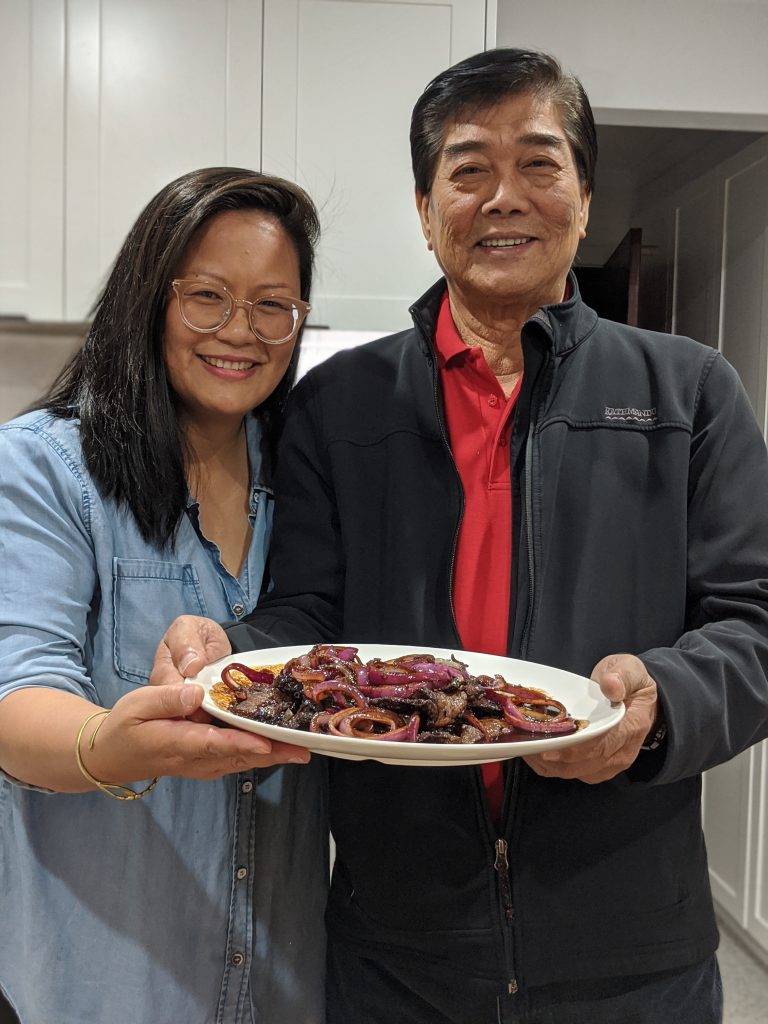
Kitchen Kind #7
Fides Mae-Santos
Calamansi
Fides-Mae Santos who works in Economic Development in the Wyndham City Council is a well respected and admired member of her Filippino community and her Melbourne family. In this Kitchen Kind, she shares the story of an ingredient key to her culture, her heritage, her memories and her future.

What meal or ingredient speaks of love to you and why?
Calamansi, the Philippine lime.
I’m a proud daughter of migrants, born in the Philippines, and bred in the western suburbs of Melbourne.
About 40 years ago, my family arrived in Australia from the Philippines. $500 in our pockets. No home. No job. No security. Other than the hope and possibility of a better life.
Calamansi, or Philippine lime, represents hope, possibility and love.
Calamansi is the tagalog term for the Philippine lime and is very much part of Filipino food culture. Calamansi (also known as calamondin) is a small citrus fruit, with a bright orange flesh and a peel that goes from green to orange as it ripens. It tastes sour with a hint of sweetness, like a mix between a lime and a mandarin. It has a distinctive aroma – citrusy and floral. Calamansi isn’t cumquat. And it’s so much more than marmalade.
Indigenous to the Philippines, and revered in its scarcity outside the Philippines, Filipinos love it in traditional and modern dishes, in marinades, sawsawan (or dipping sauces) and a range of beverages.

Acts of love for me come in Mum’s hot calamansi tea at the first sign of a cold; and Dad’s bistek kapampangan, a childhood favourite request on repeat (from both myself and my children) that uses calamansi, soy, pepper and garlic to marinade and fry thin tender slices of beef with red onions, with the marinade reduced into a thick gravy, served on a hot bed of rice.
This humble fruit represents a deeper connection to my migration story. Like many Filipino diaspora families, many will have a backyard calamansi tree. Mine is 35 years old, planted, and nurtured, with its abundance shared with family and friends over the years. It symbolises the migrant story of my parents’ generation, and all the sacrifices, hardship, blessings, joy and privilege that have come with it. From the seeds that take root in hope, survived and thrived with care, and eventually bloom into new beginnings and abundance. Our majestic tree reminds me to be grateful. For life is good, and its bounty most delicious when shared, no matter how small. Because from little things, big things grow. As a mother to two young third-generation Filipino-Australians, it is important to preserve our story to bridge the gap, foster a deeper understanding and appreciation of who they are, and where they came from. So that when our story ends, theirs continues.
Nothing worth doing is ever easy. To my beloved family, those who came before us, and those here with us. Maasim or matamis, sour or sweet, we bloom because of you.
To learn more about calamansi, visit thecalamansistory.com – a first-of-its-kind three part legacy project by The Entree.Pinays, through the lens of this beloved ingredient, the book, the short documentary, and craft beverage – aims to bring awareness to the valuable contributions of Filipino migrants in Australia, and educate Australians on the possibilities of Filipino produce and mobilise a circularity of good through the art of storytelling.
The Calamansi Story is part of my legacy. My pamana.
For the love of my cuisine, culture and community.

Turnip Media recognises the Wurundjeri as traditional owners of the land on which we live and work.
We pay respect to their elders, past, present and emerging.